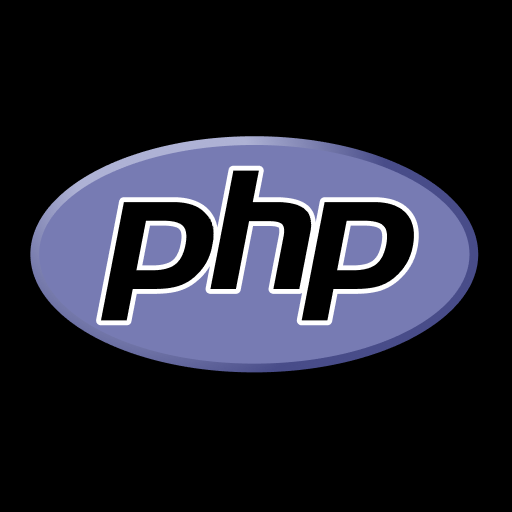PHP-AI-powered PHP assistance
AI-Powered PHP Development Assistance
📡 Help me set up a full REST API in PHP
👨🏽💻 Build a full website using PHP
🪲 Find any bug or improvement in my code
💡 Teach me a useful skill or trick in PHP
Related Tools
Load More
PHP Engineer
An expert PHP engineer to help you solve and debug problems together.

Advanced PHP Assistant
A friendly PHP programming assistant, ready to assist you.

PHP Mentor
Elevate your PHP programming with AI-guided support. Need expert insights, bug resolutions, code optimizations, or upgrades? PHP Mentor delivers custom assistance for developers across all expertise levels, making coding simpler.

PHP
Friendly help with PHP coding, bug checks, and educational guidance.

Cody - PHP
Cody its a partner for backends developers in PHP and Laravel its a part of other gpts called cody - english, cody - and cody social

Lara PHP
Advanced PHP and Laravel IT professional.
20.0 / 5 (200 votes)
Introduction to PHP
PHP, which stands for Hypertext Preprocessor, is a widely-used open-source scripting language especially suited for web development and can be embedded into HTML. PHP scripts are executed on the server, and it is known for its simplicity, efficiency, and flexibility. PHP's design purpose is to enable the creation of dynamic content that interacts with databases. A key feature of PHP is its ability to generate dynamic web pages, perform server-side scripting, command-line scripting, and develop desktop applications. For example, PHP can be used to create a login page that validates user credentials against a database.

Main Functions of PHP
Server-Side Scripting
Example
Creating a user authentication system
Scenario
PHP can validate user login information by checking credentials against a database and starting a session for authenticated users.
Form Handling
Example
Processing user input from HTML forms
Scenario
PHP can collect data from forms, validate it, and store it in a database. For instance, a contact form submission can be processed and saved using PHP.
Database Interaction
Example
CRUD operations with MySQL
Scenario
PHP can interact with databases to create, read, update, and delete records. A blogging platform might use PHP to manage posts and comments stored in a MySQL database.
Ideal Users of PHP
Web Developers
Web developers benefit from PHP's ease of integration with HTML, ability to connect to various databases, and extensive library of pre-built functions. It is particularly useful for those building dynamic websites and web applications.
Small to Medium Enterprises (SMEs)
SMEs find PHP cost-effective due to its open-source nature and robust community support. It allows for the rapid development of websites and applications without incurring high software costs.

Detailed Guidelines for Using PHP
1
Visit aichatonline.org for a free trial without login, also no need for ChatGPT Plus.
2
Install a local server environment like XAMPP or WAMP to run PHP scripts on your machine.
3
Write your PHP code using a text editor or an Integrated Development Environment (IDE) such as Visual Studio Code or PhpStorm.
4
Save your PHP files with a .php extension and place them in the web server's root directory to execute them.
5
Access your PHP scripts via a web browser by navigating to http://localhost/yourfilename.php to see the output and debug as necessary.
Try other advanced and practical GPTs
ベテランリライター(脚本)
Transform your text with AI precision.

Curriculum Design
AI-Powered Curriculum Design for Educators

Protocolo P - 02
AI-powered tool for scientific writing

Protocolo - 03
AI-Powered Scientific Writing Simplified

Protocolo P - 01
AI-powered tool for precise writing

LightCalc
AI-powered lighting recommendations.

Research Buddy
Unlock the Power of AI for In-Depth Research.

⭐️ Cocoa Twins® Trendy Undercut Prompt Pro ⭐️
AI-powered custom art for trendsetters.

Odoo Dev Expert
Your AI-powered Odoo development guide

Physics Solver Pro
AI-Powered Physics Problem Solver

CodeSharp
AI-powered tool for C# and .NET

RS3 Scripting Assistant
AI-powered RS3 scripting made easy.

- Web Development
- Database Management
- Dynamic Content
- Form Handling
- Server Scripting
Comprehensive Q&A About PHP
What is PHP and what is it used for?
PHP is a server-side scripting language designed for web development but also used as a general-purpose programming language. It is embedded in HTML and used to manage dynamic content, databases, session tracking, and even build entire e-commerce sites.
How do I start learning PHP?
To start learning PHP, first ensure you have a local server environment like XAMPP or WAMP installed. Then, find a good tutorial or online course that covers the basics, such as syntax, variables, control structures, and functions. Practice by creating simple web applications and gradually advance to more complex projects.
What are the common uses of PHP?
PHP is commonly used for creating dynamic web pages, handling forms, managing sessions, interacting with databases, generating dynamic content, and building complete web applications such as content management systems (CMS) and e-commerce platforms.
What are some popular PHP frameworks?
Some popular PHP frameworks include Laravel, Symfony, CodeIgniter, Zend Framework, and Yii. These frameworks provide a structured environment for developing robust web applications efficiently, with built-in tools and libraries to streamline common tasks.
How can I debug PHP code?
Debugging PHP code can be done using various methods, such as using the built-in error reporting functions, employing debugging tools like Xdebug, or utilizing logging techniques to trace and fix issues in your scripts. Additionally, IDEs like PhpStorm provide integrated debugging features.